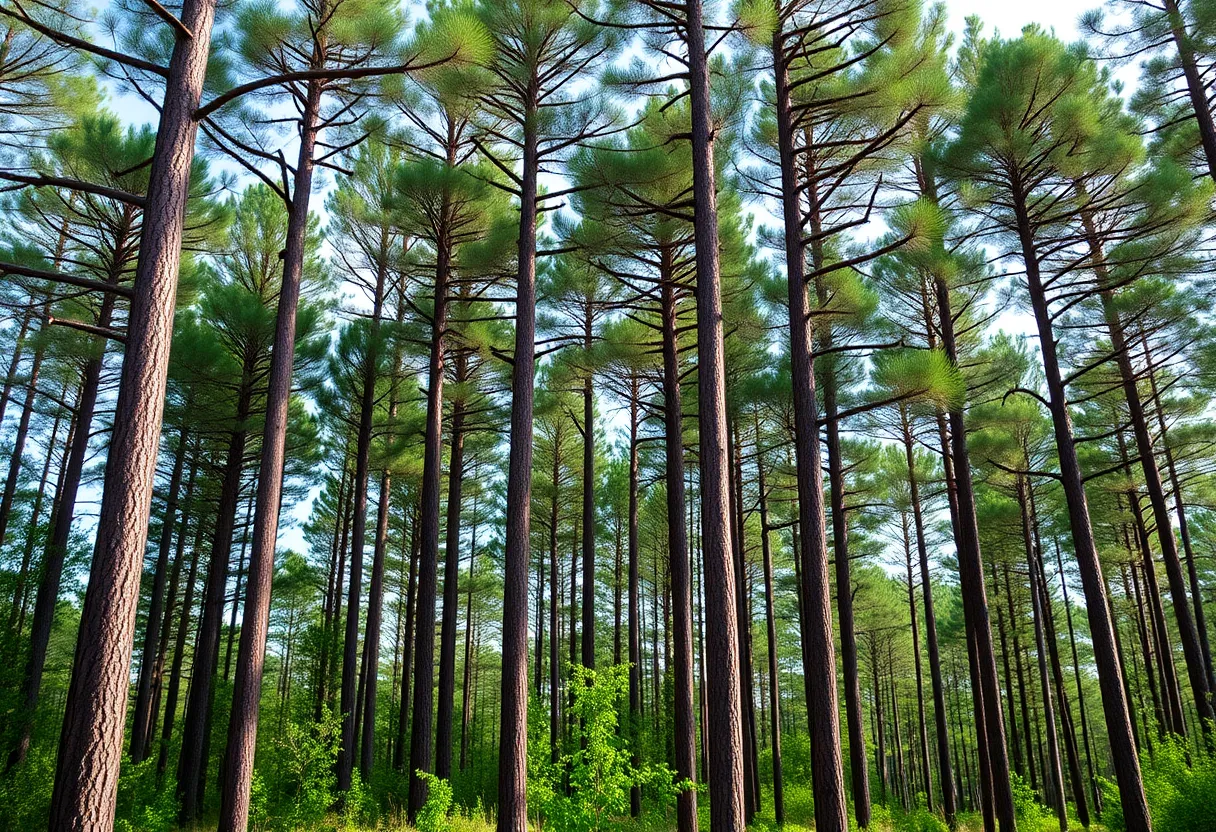News Summary
The Texas timber industry remains stable despite fluctuating market conditions, particularly in sawtimber demand from East Texas. The state represents a significant portion of new home construction in the nation, aiding mills in maintaining activity. Challenges persist with smaller-diameter trees and soft pulpwood prices, but innovative materials and support for small landowners signal a positive outlook for the industry. Weather conditions impact harvesting, yet reinvestment and evolving timber products instill confidence in the timber sector’s future.
Texas Timber Industry Shows Stability Despite Market Variability and Innovative Expansions
The Texas timber industry remains largely stable, even in the face of mixed market conditions and the challenge of climate impacts. Current market dynamics are reminiscent of conditions seen two years ago, with consistent demand for sawtimber coming primarily from East Texas pine trees. However, the industry faces challenges as an oversupply of smaller-diameter trees has softened prices for pulpwood.
Geographic Reach and Ownership of Timberland
About one-fifth of Texas consists of approximately 12 million productive acres of timber located in 43 East Texas counties, out of a total of roughly 22 million acres in the region. The majority of this timberland is privately owned, primarily by small family landowners. Small percentages are held by timber investment management organizations and real estate investment trusts, with public land contributing an even smaller share.
Impact on the Construction Industry
The pine forests in East Texas are vital as they primarily supply dimensional lumber, which is crucial for the construction industry. As housing construction begins to thrive, the solid wood industry closely ties to housing trends, with demand for dimensional lumber significantly influenced by these factors.
Market Trends and Regional Growth
Despite a nationwide slowdown in housing starts that has affected timber markets to a degree, Texas has displayed resilience with a noted increase in housing starts following a two-year decline. Currently, Texas accounts for nearly 17% of the nation’s total new home construction, which has revived many sawmills and prompted expansions and reinvestments across the sector.
Challenges in the Pulp and Paper Sector
The state’s pulp and paper industry continues to face considerable hurdles due to an oversupply of material. However, signs of stability and growth are evident through the reinvestments from local mills, which indicate confidence in the future of the Texas timber industry.
International Trade and Wood Product Innovations
Although Texas generally operates as a net-importer state, projections for 2024 highlight that trade with Mexico and Canada will account for an impressive 88% of Texas’ exports and 42% of its imports. The landscape for Texas timber production is also evolving, as there is a growing interest in mass timber and engineered wood products for multistory commercial buildings. These modern materials not only enhance aesthetic appeal but also offer improved energy efficiency, providing alternatives to traditional concrete or steel.
Sustainable Management Initiatives
In a bid to support the sustainability of timberland, the Texas A&M Forest Service is enhancing financial assistance programs geared towards small landowners. This fall, a new cost-share program is anticipated to reimburse up to 80% of qualifying management activity costs, helping smaller landowners actively manage their timber. Effective management is vital for maintaining healthy forests and reducing the risk of wildfires.
Weather Impacts on Timber Production
This year has seen mixed weather conditions affecting not only timber harvests but also broader crop production across the region. While drier weather has aided some timber harvesting efforts, it has emphasized stress on other crops. The corn harvest has progressed efficiently with promising yields, although hay production remains a challenge. Meanwhile, the cattle markets show strength, supported by adequate water supply for livestock from full stock tanks. Still, recent heat and dry spells stress pasture grasses and some crops.
Overall Outlook for Timber Production
In conclusion, Texas timber producers are navigating a landscape that is not only tied to traditional products like pulpwood and lumber but are also actively exploring new opportunities for value-added products. As the industry adapts to changing market conditions and embraces innovation, the overall outlook for Texas timber appears promising.
Deeper Dive: News & Info About This Topic
Additional Resources
- Resource Wise: How Much Money Is an Acre of Timber Worth
- Wikipedia: Texas Timber Industry
- CoStar: North Texas First Mass Timber Office Building Sets High Bar for Carbon Neutral Development
- Google Search: Texas Timber Market
- Express News: Mass Timber Construction Boon Texas
- Encyclopedia Britannica: Timber
Author: Construction CA News
The CALIFORNIA STAFF WRITER represents the experienced team at constructioncanews.com, your go-to source for actionable local news and information in California and beyond. Specializing in "news you can use," we cover essential topics like product reviews for personal and business needs, local business directories, politics, real estate trends, neighborhood insights, and state news affecting the area—with deep expertise drawn from years of dedicated reporting and strong community input, including local press releases and business updates. We deliver top reporting on high-value events such as the Rose Parade, Coachella, Comic-Con, and the California State Fair. Our coverage extends to key organizations like the California Building Industry Association and Associated General Contractors of California, plus leading businesses in technology and entertainment that power the local economy such as Apple and Alphabet. As part of the broader network, including constructionnynews.com, constructiontxnews.com, and constructionflnews.com, we provide comprehensive, credible insights into the dynamic landscape across multiple states.




